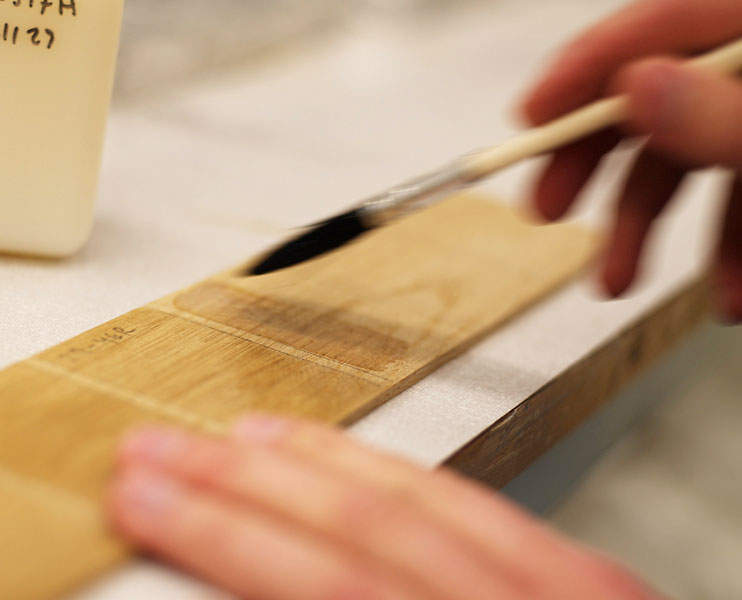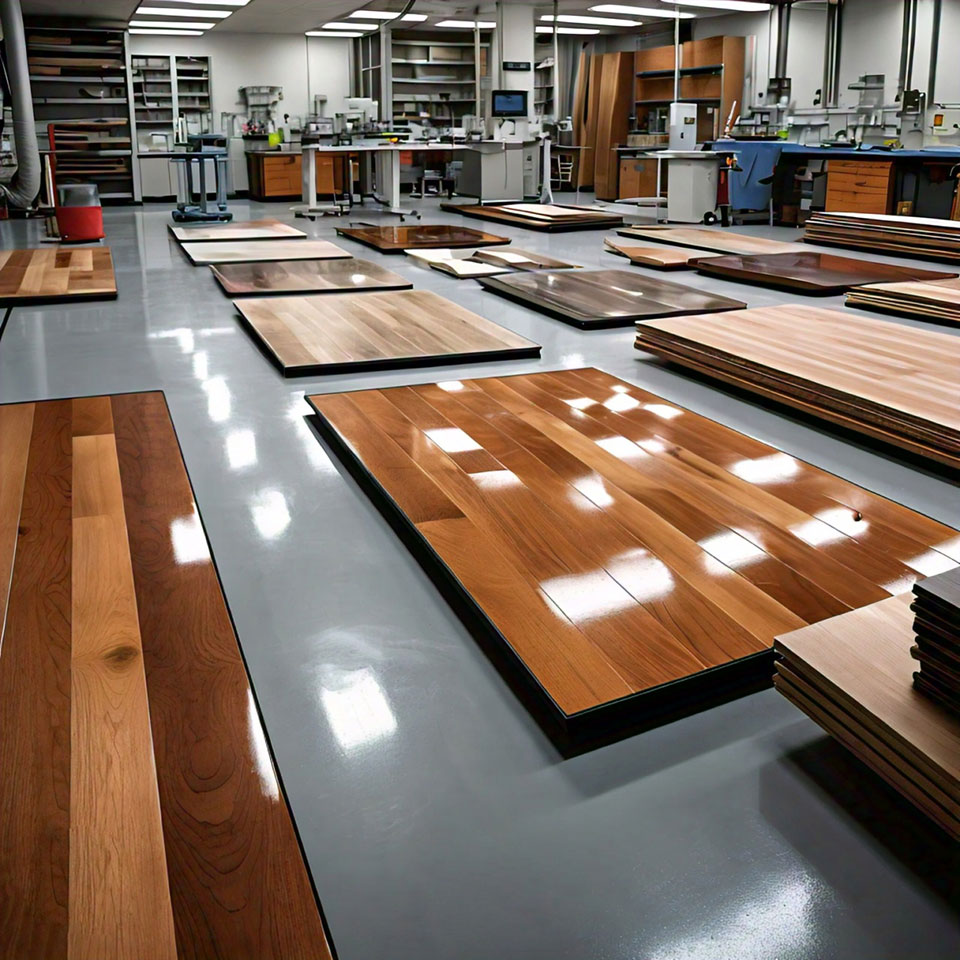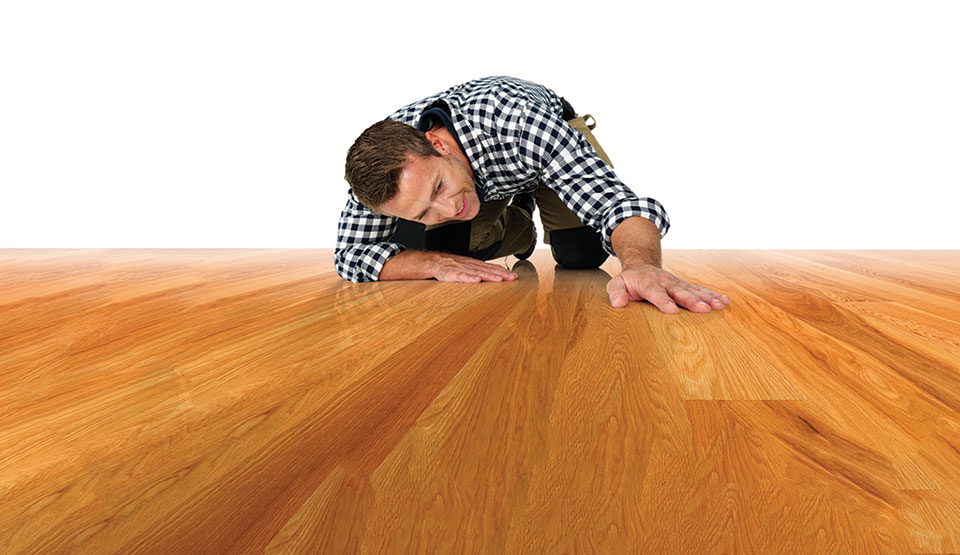
Leading the Way in Timber Floor Coatings
As with all things in modern life, the technology used in timber floor coatings and staining systems is ever evolving. Change is driven by many factors, including the desire for increased performance, environmental considerations, health implications and market requirements. So what does this mean for the future of Bona coatings and finishes?
From Idea to the Floor
Innovations in floor finishing take time and testing. When Bona develop new coatings there is typically a three-to-four-year lead time from the initial concept discussions to the product being fully realized and available to the market. During this process, there is an extensive laboratory development period where Bona technicians create different versions of a product and trial it on a bench top. Then, batches of increasing size are made and tested prior to application tests on large scale test panels.
Further development is then usually still needed before it is determined that the product can be tested for trial use on floors. This final testing phase is an opportunity for Bona to get feedback from contractors regarding use of the product including product performance, ease of application, dying times, durability, appearance and, if appropriate, how the product performs in conjunction with our stains or primers. Additionally, floors are monitored to gauge performance in real life including uneven wear patterns, irregular maintenance, accidental spillage, etc. Once a product successfully passes the trial period we then will proceed with production of larger batches for commercial distribution to our global network of more than 90 countries.
Whilst commercial needs drive most new product development, Bona also focusses on driving change by addressing environmental and health concerns. This reinforces our committment to making healthier and safer products to stay ahead of increasingly stricter regulations and legislation. The industry is also seeing push back demand from home owners for new products and systems that are both safer and perform to higher standards. Here are a few of the ways that Bona is leading change in our industry.

Water-based Finishes
Bona Sweden were instrumental in pioneering the use of water-based finishes in the early 1970’s which brought about a new way to coat a floor without the use of toxic and hazardous chemicals. While early versions of these finishes struggled with dry times and durability, today’s waterborne finishes offer exceptional performance which is equal to or exceeds that of solvent based finishes, with the added bonus of being much more sustainable and non-toxic. With many countries enforcing legislation and restrictions for solvent-based polyurethane (PU) finishes (they have been banned from professional use in Europe for many years) waterborne finish systems are the future.
Chemistry matters
In addition to minimizing solvents, Bona are working to innovate better chemistry within finishes. We now have a better understanding of the impact of the ingredients used in coatings and finishing products, some of which are now under intense regulation and scrutiny. Bona are working diligently to replace chemicals with better performing and more sustainable options.
One of the groups of chemicals now being removed from many products worldwide is per- and polyfluoroalkyl substances, better known as PFAS. The first PFAS product was developed by DuPont in the 1940’s – polytetrafluoroethylene (PTFE) and marketed under the name ‘Teflon’. In coatings, PFAS chemicals are often used as part of the surfactant systems but can affect several different properties including reducing surface tension, controlling foaming levels, and improving adhesion, chemical resistance and cleanability. PFAS chemicals are used across a huge range of products, including clothing, furniture, nonstick cookware, electronics, food packaging, cosmetics, herbicides / pesticide, firefighting foams and, of course, floor coatings.
However, we now know that PFAS remain in the environment for upwards of 100 years and are referred to as ‘forever chemicals’ due to their lingering presence and inability to break down. These chemicals have been found in air, water, soil, rainwater and in the human body. The only way to reduce exposure to PFAS chemicals is to remove them from the products we use and this is Bona’s long term goal.
Governments around the world have started to place restrictions upon the use of PFAS materials with the Australian Government having established several different departments to investigate and recommend actions. Some PFAS materials have already been banned from sale or import in Australian goods from 2025 onwards and discussions continue regarding next steps.
Similar actions are being taken in the EU through the REACH legislation systems with many suppliers of PFAS chemicals removing them from their products. Bona are leading the way and have already launched floor coatings which do not have PFAS chemicals in their formulations (Bona Traffic GO and Bona Mega EVO) with the intention to remove PFAS chemicals from more of our floor finishing products as soon as possible.

Sustainability in Refinishing
When thinking about more sustainable products and options for floors, many floor owners may not realize that refinishing an existing floor is more sustainable than floor replacement. Tearing out old flooring material and replacing it with new incurs a higher carbon footprint. Data from the IVL Swedish Environmental Institute shows a 78 percent carbon footprint reduction when refinishing rather than replacing wood floors, and a minimum of 90 percent savings in resources (transport, electricity use, materials, etc.).
Moving to a more sustainable model and removing chemicals from floor finishes are just some of the changes that Bona is promoting within our industry. Any change comes with a level of complexity and challenge, but these evolutions are important and necessary. Whilst Bona are ensuring our floor finishing products are formulated with

 Global
Global Australia
Australia Austria
Austria Belarus
Belarus Belgium (FR)
Belgium (FR) Bulgaria
Bulgaria Canada (EN)
Canada (EN) China ( 中文)
China ( 中文) China Hong Kong
China Hong Kong China Taiwan ( 中文)
China Taiwan ( 中文) Croatia
Croatia Czech Republic & Slovakia
Czech Republic & Slovakia Denmark
Denmark Finland
Finland France
France Germany
Germany Greece
Greece Hungary
Hungary India (EN)
India (EN) Israel
Israel Italy
Italy Japan (日本語)
Japan (日本語) Lithuania
Lithuania Luxemburg (FR)
Luxemburg (FR) Morocco (FR)
Morocco (FR) Netherlands
Netherlands New Zealand
New Zealand Norway
Norway Poland
Poland Portugal
Portugal Romania
Romania Russia
Russia Serbia
Serbia Singapore
Singapore Slovenia
Slovenia South Africa (EN)
South Africa (EN) Spain
Spain Sweden
Sweden Switzerland (DE)
Switzerland (DE) Ukraine
Ukraine United Arab Emirates (EN)
United Arab Emirates (EN) United Kingdom & Ireland
United Kingdom & Ireland United States
United States